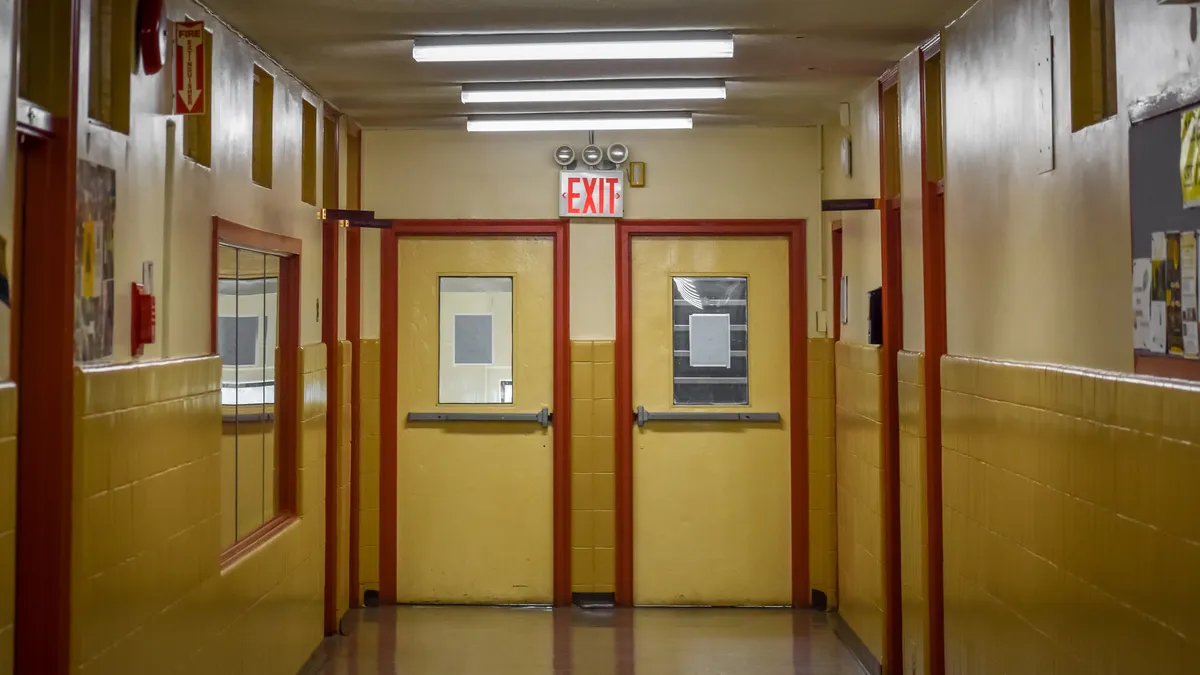To reduce chronic absenteeism, districts should use targeted and tailored approaches for parents, teachers and and secondary school students based on empathy and clear communication about attendance expectations and the value of in-person learning, according to research by EAB, an education consulting firm.
The focus needs to be on all three populations since they each figure differently into the root causes for absenteeism, said Scott Fassbach, chief research officer at EAB, who led an Oct. 12 webinar hosted by EAB and AASA, The School Superintendents Association, on tackling chronic absenteeism.
For example, parents are more likely to rationalize student absences since the COVID-19 pandemic when students learned from home and schools were extra cautious about illnesses.
Students, meanwhile, have told researchers they stay home from school because they don't feel supported or connected there, are afraid to seek academic help, and doubt whether their classes are relevant to their futures.
For teachers, uncertainty about their role in student attendance can contribute to higher absenteeism.
Fassbach said spikes in chronic absenteeism are evident across various student populations, regardless of grade level or economic status.
"We hear from districts again and again, 'We're overwhelmed trying to respond to the number of students who are missing class,'" he said.
A newly released analysis by Attendance Works found that during the 2021-22 school year, 6.5 million more students missed at least 10% or more of school days than in 2017-18.
Because of these factors, new approaches to combat absenteeism are needed, Fassbach said. "I think what you're going to find is the problems today are not the problems pre-pandemic so we basically need a new playbook."
Here are strategies aimed at parents, students and teachers:
Parents
Targeted messaging about student attendance should be directed to parents, especially at the elementary school level, Fassbach said.
EAB analysis and interviews found that 86% of district leaders say they "agree" or "strongly agree" that parents value school attendance less now than in previous years. Likewise, EAB research found that 63% of K-6 leaders ranked parents' misconceptions about attendance as the No. 1 cause of chronic absenteeism.
To encourage parents of children in all grades to support attendance, EAB recommends districts take approaches that show empathy without placing blame and support parents making pro-attendance decisions. In addition, districts need to clearly communicate attendance expectations to parents and explain the consequences of continued absences.
For example, when a student is absent for three days, a district could send parents a personalized text message saying the school misses the student and providing options for support, said Fassbach. Texts to parents are more reliable and accepted compared to mail and email, he said.
Districts also need to give parents clear and repeated messaging — via district and school websites — about when to keep students home or send them to school.
Given concerns over COVID-19 transmission for the past three years, schools have been telling parents, "When in doubt, keep your kid out," Fassbach said.
"I think this is a bigger piece of the puzzle … parents have become much more likely to say, 'It's all right for my kid to stay home today.'"
Schools can give parents "nudges" about attendance policies, such as a checklist with health symptoms to determine whether to keep their child home, he said.
Students
At the middle and high school levels, students need more ownership over their attendance. Activities that support students' connections to school can help accomplish this. One approach, for example, is for school staff to do a relationship mapping exercise to ensure every student has a positive bond with a trusted adult.
The student's trusted school-based adult should ask the student about their hobbies and career interests and guide the student toward extracurricular activities at the school.
Fassbach said this relationship building is important because many students moved to new buildings as they advanced grade levels during the pandemic.
"Students say they don't really know any of the adults in the building," he said. "As a result, they don't know who to talk to when they're having trouble at home or if they're being bullied."
Students who participate in extracurricular activities are less likely to have unexcused absences or skip classes, according to research cited by EAB, which suggests that schools can keep a central accountability report to track which chronically absent students are participating in extracurricular activities.
Teachers
Districts need to clarify to teachers of all grade levels the roles they play in student attendance and then support them in honing those skills.
For example, a district could have a checklist for teachers outlining student attendance responsibilities to complete every day, every week and every quarter of the school year. These tasks could include logging student attendance daily and reaching out to parents when students are absent more than two days.
"I don't think that teachers and administrators are clear on what they're expected to do about student attendance," Fassbach said. "A lot of it goes unwritten, and frankly, if it's unwritten, it's not going to get done."
One strategy is for districts to publish a teacher guide about student attendance that includes a script for talking with parents about concerns. At least once during a grading period, staff can come together to discuss what's working or if revisions to the guide are needed.
Districts can also make it clear to teachers what is not expected of them. For instance, they're not expected to have punitive conversations with parents about attendance, Fassbach said.





















